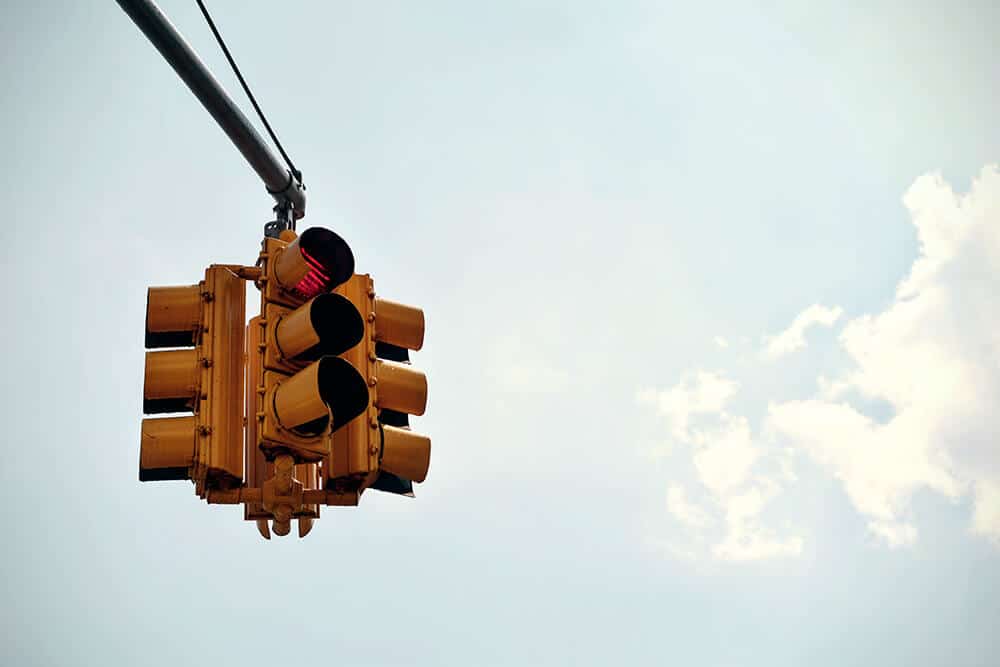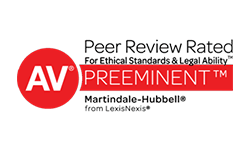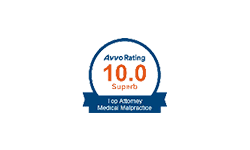Intersections come in many different sizes, designs, and configurations. Some intersections contain as many as six converging streets. For any driver, but especially those with little experience driving or knowledge of the area, intersections can be confusing. When that confusion is combined with impatience or general negligence, the chances of an accident happening increases significantly.
According to the National Highway Traffic Safety Administration (NHTSA), approximately 40 percent of all traffic accidents take place at intersections. The most common cause of these accidents is aggressive driving. Behaviors that are considered aggressive include tailgating, improper lane changes, dangerous passing, erratic speed changes, failing to yield right of way, speeding, making improper turns, and ignoring traffic control devices or signs.
In order to prevent accidents that occur at intersections, it’s important to understand what the best driving behaviors are for approaching an intersection and dealing with different types of traffic.
Tips to Avoid Accidents at Intersections
As a responsible, safe driver, there are a number of things you can do to prevent and avoid accidents that occur at intersections. The actions and behaviors we discuss below revolve around patience, obeying traffic laws, and proceeding with caution.
Approaching an Intersection
When you approach an intersection it’s important to drive defensively. This means always paying attention and anticipating problems or situations that could require heightened caution. Remain patient. Depending on the intersection’s set up, it may take some time to pass through it. Impatience increases negative emotions and decreases attention.
It’s also important to avoid all distractions and refrain from speeding. If you’re distracted or driving too fast, you may be unable to stop in order to avoid a collision.
Intersection with Traffic Lights
Intersections with stop signs are typically simpler than those with traffic lights. At most, there may be a four-way stop. As responsible drivers know, if you get to a stop sign at the same time as someone else, the driver to the right has the right-of-way. Following that procedure will ensure everyone gets through the intersection safely. Intersections with traffic lights, however, can be confusing.
Remember that a green light means you can proceed with caution. If the light is yellow, that does not mean you should speed up. You should only cross if you’re too close to stop safely at the white line. Always stop for a red light. Also remember that regardless of what color the light is, emergency vehicles have the right-of-way. All drivers should stop and wait until the emergency vehicle has passed.
If you’re at an intersection with blinking yellow or red lights, the rules are a little different. If your light is blinking yellow, you need to remain cautious when approaching and proceeding through the intersection. A blinking red light, however, means you are required to stop before continuing forward.
Always be sure to use your turn signals appropriately. This will inform the other drivers around you of your intentions. Never assume that it’s safe to turn, even if you’ve got the go-ahead from the light. Always double check your surroundings.
In the event of poor weather, always give yourself extra time to slow down and stop. If you don’t, especially in the snow, you could slide through an intersection.
Unmarked Intersections
Unregulated intersections have no stop signs or traffic lights. When this is the case, it’s important for all directions to come to a complete stop and follow the four-way stop rules. Drivers who reach the intersection first always have the right-of-way. Vehicles turning left should always yield to vehicles approaching from the right and heading straight.
Intersections and Large Trucks
No matter what type of intersection you’re at, there’s a need for special caution when tractor trailers or other large vehicles approach. It’s important to note that large trucks typically need more space to turn. At a traffic light intersection, always stop before the white line. That line is there to ensure there is enough room for nearby vehicles to turn. If you’re at an intersection with signage, give yourself extra room and proceed with caution. It’s also important to note that truck drivers have a number of blind spots. If you’re in a smaller vehicle, avoid tailgating and do what you can to stay in a spot where the trucker can see you.
Intersection wrecks are among the deadliest. If you’ve been in an accident or have lost a loved one, you can take legal action to hold the negligent party accountable and seek compensation for your losses. Shrager, Sachs, & Blanco have years of experience helping crash victims recover from what they were wrongfully put through. To learn more about the car accident claim process, schedule a free consultation with us today.









